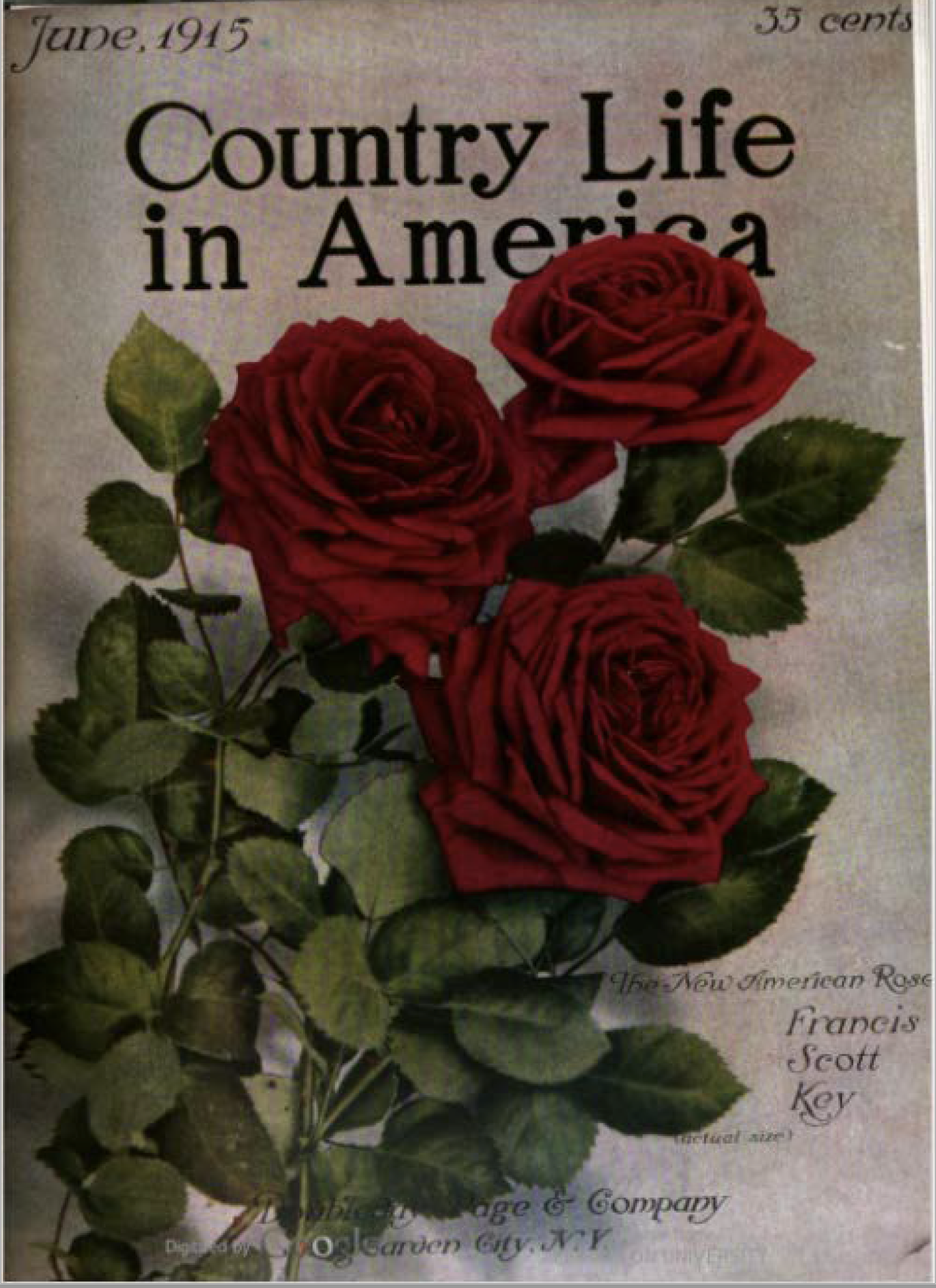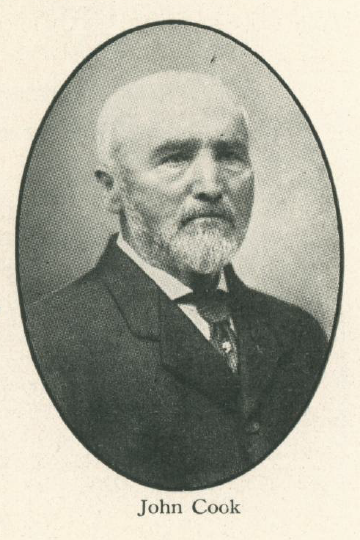|
The new Hybrid Tea rose shown on the cover of this month’s magazine is appropriately given a characteristic American name, since it is, itself, of American production, and it seems to fit eminently well into conditions of the country, at all events so far as the preliminary trials have gone. The rose is remarkable for its massiveness; not only is the flower above the average in size, but its bulk is made up by actual quantity of petals. The globular form of the flower is interesting and is a welcome change from the long, pointed type which has been characteristic of so many recent roses. Francis Scott Key, when shown at the exhibitions during the last winter, never failed to attract attention; the color is one that illuminates well under artificial light. It has not been tried extensively as an outdoor rose, but judging from its "build," which is a fair standard to go by, this rose bids fair to acquit itself well as an outdoor variety. But it is essentially as a forcing rose under glass that it has received attention so far.
It is interesting at this time to note that although the majority of new roses yet come to us from Europe, still America is making a record for itself in the production of novelties eminently fitted to its own requirements. John Cook, the raiser of this rose, has also a number of other meritorious novelties to his credit, beginning with Souvenir de Wootten, which was the first Hybrid Tea rose produced in America; Radiance, which has been described as one of the best garden roses ever introduced, and for which a silver medal of honor was awarded to the raiser by the American Rose Society last year; Panama, a rose which has not yet been seen in commerce, but for which we venture to prophesy a distinct place as an outdoor and bedding variety, is a cross between Frau Karl Druschki and an unnamed pink seedling. In the American Rose Society’s plots in Elizabeth Park, Hartford, Conn., this rose last year made a vary brave appearance. It is a large flower with loosely arranged, large white petals, with just the faintest suspicion of a blush, and as growing there it seemed to be remarkable for its persistency, the flowers enduring for a long time on the plant. Other roses credited to Mr. Cook are Marie Dingee, Anne Cook, Mrs. Robert Garrett, Baltimore, Enchanter, Cardinal, My Maryland. John Cook’s name will ever be written large in the history of American rose growing, because of these achievements. He was born at Freiburg, Baden, in 1833. From the age of fourteen he has spent his life in horticultural pursuits. He came to America when about seventeen years old and worked for some time in New York City with David Clark, then one of the most prominent florists in New York City, and whose business is still being carried on in the same location under the name of David Clark’s Sons. John Cook later went to Baltimore and took charge of a private estate, laying out and developing the grounds from the beginning. It is on this same property that he to-day has his rose-growing establishment, surrounded by the picturesque plantings which he made so many years ago, and among which are included some of the finest specimen conifers to be seen in that part of the country. For many years past he has given his attention more particularly to breeding new roses, with the results that have already been stated—which it may be said, in passing, represent a mere fraction of the many thousands of plants that he has handled. This establishment, by the way, is devoted commercially solely to supplying the needs of a retail florist business; no plants of novelties are grown for sale, the introduction of the new things being done through other concerns which specialize in plant distribution. L. B. |

